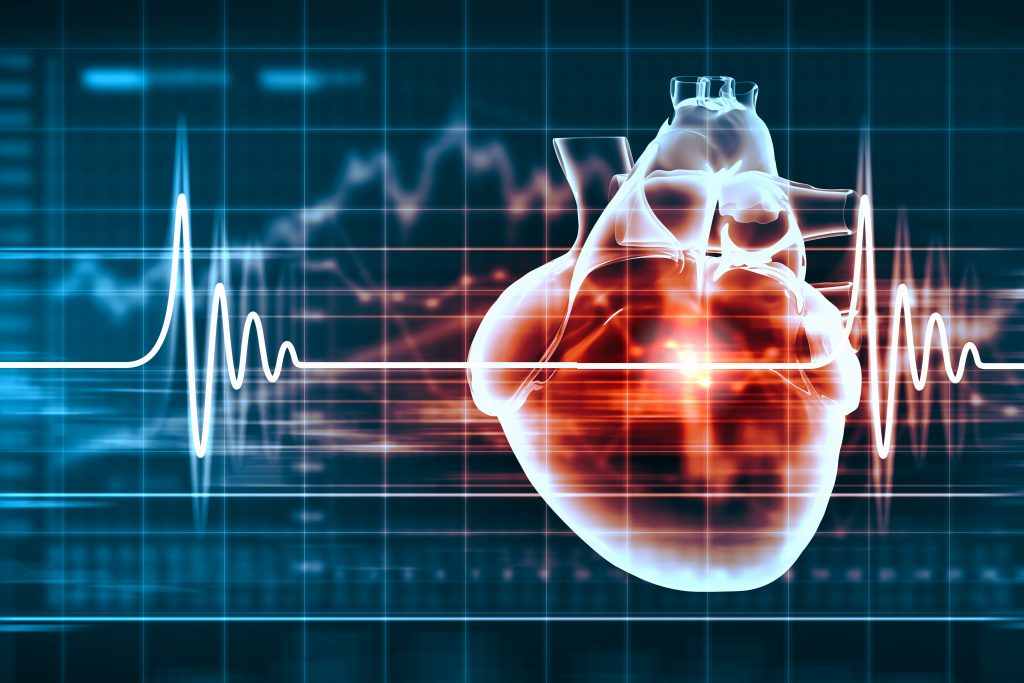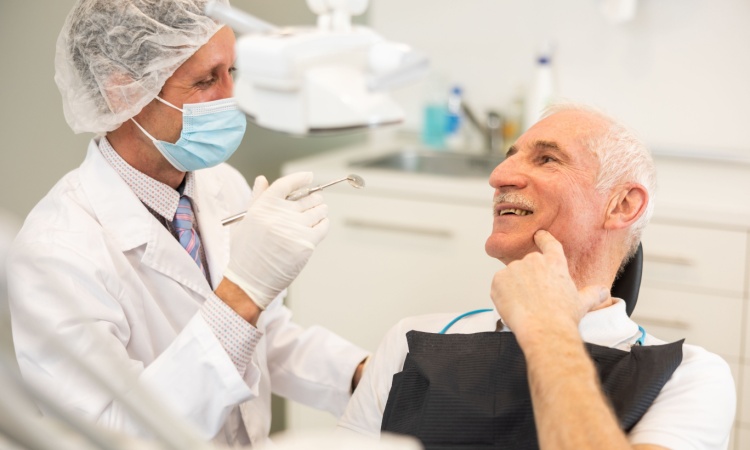
The immune system is perhaps the most important network of cells and proteins in our bodies. The main objective of the immune system is to fight against any infection.
The immune system develops and controls certain defence cells called the white blood cells, whose primary function is to defend the body from any bacterial infection or disease. These white blood cells are produced in the multipotent cells of the bone marrow.
Additionally, the immune system is like a data collection system. Once it defeats a particular virus, it records its information. When the bacterium again enters the body, the immune system can quickly recognise it and eliminate it.
There are certain things we can do, and certain food we can eat to give our immune system a boost. Similarly, some lifestyle choices and medical conditions can compromise the immune system.
Types of cardiovascular diseases
Coronary heart disease
Coronary heart disease, otherwise known as ischaemic heart disease, occurs when the coronary arteries begin to constrict.
Atherosclerosis is the term used to describe the narrowing of these coronary arteries. The coronary arteries narrow when fatty materials and plaque concentrations accumulate inside the blood vessels.
Atherosclerosis also affects the flow of blood and oxygen to the heart.
A combination of lifestyle habits and other conditions contribute to the accumulation of atherosclerosis, such as:
– lack of exercise;
– overweight;
– an unhealthy diet;
– smoking;
– diabetes;
– hypertension;
– high levels of cholesterol.
The two common forms of coronary heart diseases are:
Heart attack
A heart attack is a condition that occurs when blood supply to your heart is completely blocked.
As we grow older, the inner walls of the arteries can become blocked due to plaque accumulation.
The plaque accumulation can ultimately restrict the flow of blood and oxygen to the heart, causing it to go into cardiogenic shock.
Some common symptoms of heart attack are:
- Shortness of breath – you find breathing difficult and need to take constant deep breaths due to a tightening in your chest;
- Back – a feeling of pain between your shoulder blades causes discomfort;
- Arms – numbness in one or both arms causes pain and distress, giving it a sense of heaviness;
- Shoulders – experiencing a general heaviness around one or both shoulders;
- Neck – a feeling of discomfort in your neck, or a burning feeling in your throat; and
- Jaw – a feeling of ache or tightness around your lower jaw on one or both sides.
While exhibiting these symptoms, you may also feel nausea, dizziness, or break out in cold sweats.
Angina

Angina is a chronic disorder when short episodes of chest pain periodically occur.
Generally, this is not a heart attack but can still increase the risks of suffering a heart attack.
There are different levels of angina:
- Stable angina – during physical activity or extreme emotion, you may experience chest pain.
- Unstable angina – chest pain that may suddenly arise without basis, and increases over time.
- Prinzmetal angina – brief discomfort or pain caused by spasms, which range from slight to severe in one or more coronary arteries, and could clog the blood supply to the heart.
Angina causes pain and discomfort that frequently feels tightened and compressed, which can vary from trivial to severe.
Some common symptoms of angina are:
– a feeling of pain and discomfort in the centre of your chest;
– shortness of breath ;
– an unpleasant feeling in your chest without the feeling of pain.
Cerebrovascular diseases
When blood vessels and blood supply to your brain are affected by any condition, disease or disorder, this is known as cerebrovascular disease.
The cerebrovascular disease occurs with insufficient blood flow or bleeding, which includes one or more of the cerebral blood vessels involved in the neurotic process.
Insufficient blood flow to your brain can cause temporary or permanent damage.
These blood flow restrictions may occur from a blood vessel constricting, a clot developing, blockage, or blood vessel rupture.
Stroke
Stroke is the most common type of cerebrovascular disease.
When blood movement to your brain is continually disrupted, the loss of neurological function occurs.
A blockage caused by a disruption in the blood flow can result in an ischemic stroke or a haemorrhage. This could result in permanent damage or death.
Some symptoms may include:
– dizziness, nausea, or vomiting;
– abnormally severe headache;
– confusion, disorientation or memory loss;
– numbness, or weakness in limbs or face (particularly on one side);
– abnormal or slurred speech;
– trouble with understanding;
– loss of vision;
– loss of balance or mobility coordination.
Different types of stroke:
- Ischemic stroke – when an artery in the brain becomes clogged.
- Haemorrhagic stroke – when blood from an artery begins to bleed into the brain.
- Transient ischemic attack – a short period of neurological dysfunction caused by a loss of blood movement in the brain.
Peripheral arterial disease
When circulatory condition with narrowed arteries decreases blood movement to your limbs, this is known as peripheral arterial disease.
The decrease in blood flow can produce pain and numbness, and can also increase the risk of an infection in the affected limbs.
Your body may begin to have difficulty in fighting the infection.
If not medically checked in its early stages, clogged blood flow can cause tissue death. If not taken seriously, this could lead to leg amputation.
Some symptoms may include:
– pain
– numbness
– aching
– leadenness in the leg muscles
– leg cramps
– faint or absent pulses in the legs or feet
– foot and leg wounds that take a while to heal
– a pale or bluish skin colour
– a lower temperature in one leg compared to the other leg
– decreased leg-hair and nail growth
– erectile difficulties, especially among diabetic men
Many people who have a peripheral arterial disorder do not have any signs or symptoms.
However, you can always inquire with your doctor for a medical check if you are:
– Younger than 50 years and suffer from diabetes and one or more risk factors for atherosclerosis;
– 50 years or older and have a history of smoking or diabetes;
– 70 years and older
Rheumatic heart disease
When a strain of an acute rheumatic fever has cleared, the damages to the heart valve(s) that have surfaced can cause rheumatic heart disease.
An acute rheumatic fever arises when our body’s immune system responds to a bacterial infection.
This bacterial infection, commonly known as strep bacteria, affects the heart, the joints, the brain, and the skin.
However, the symptoms of acute rheumatic fever typically leave no lasting damage to the brain, the joints and/or the skin.
On the contrary, damages to the heart valves may remain once the period of acute rheumatic fever has cleared.
Rheumatic heart disease can affect supporting tissues, especially in the heart, the joints, the skin, or the brain.
If the affected area becomes permanent, it could cause congestive heart failure.
Congestive heart failure is a condition in which the heart cannot pump out all the blood that enters it.
When the heart is unable to conduct its proper task, it can lead to an accumulation of blood in the vessels leading to the heart and fluid in the body tissues.
Some symptoms may include:
– chest pain;
– breathlessness with physical activity or when lying down;
– weakness and tiredness;
– swelling of the legs and face.
Congenital heart disease
Congenital heart disease is an abnormality in your heart’s structure that you were born with.
Congenital heart disease occurs when a baby is born with a heart that has not fully formed, caused by a defect in the structure of the heart and vessels.
Congenital heart disease is the most common birth defect in Australia and affects one in a hundred babies.
There are many different types of congenital heart diseases:
A hole in the heart
Babies can be born with a hole in the wall between the heart chambers or in one of the blood vessels. This may cause the heart to pump less blood and oxygen around the body.
Problems with the blood vessels
Sometimes, the large blood vessels entering the heart are not fully formed and are too thin, or the blood vessels are in the wrong position. Problems with the blood vessels will affect how the heart works.
Problems with the heart valves
If a valve is too narrow, the heart has to put in extra effort to pump blood. Sometimes the blood flow returns into the valve, adding more stress on the heart.
Symptoms of congenital heart diseases may not exist however, it may be suspected in a newborn if:
– their skin, lips or fingernails are blue (called ‘cyanosis’);
– their breathing is rapid;
– their blood is not circulating well;
– swelling to the legs, ankles, hands, or tummy or the skin around the eyes;
– abnormal weight gain and feeding habit;
– the doctor can hear a heart murmur.
A paediatric cardiologist will be able to treat a child with congenital heart disease. When a more serious case arises, treatment will be provided by a paediatric heart surgeon.
Treatments of congenital heart diseases may include medicines, surgery, and cardiac catheter procedures.
However, the treatment will depend on the severity of the condition, age, size, and general health of the child.
Venus thromboembolism
Venous thromboembolism is a disorder that includes both, deep vein thrombosis and pulmonary embolism.
Deep vein thrombosis occurs when a blood clot forms in the deep vein of the leg or the pelvis, obstructing blood movement.
Pulmonary embolism occurs when a deep vein thrombosis clot breaks off from the vein. The clot moves through the bloodstream to the heart and, eventually, to the lungs. This clot can block a vessel in the lung and disrupt blood supply.
Some contributing factors to this condition are:
– oestrogen based medication use;
– lifestyle habits;
– sitting for long periods (lengthy travel or desk-based jobs);
– lack of physical activity;
– smoking;
– excessive, long term alcohol consumption;
– obesity.
Certain groups are at a higher risk for venous thromboembolism:
– older people;
– people who are obese or overweight;
– people with cancer or other conditions (including autoimmune disorders such as lupus).
Some symptoms may include:
– swelling in the foot, ankle, hands or wrists;
– pain and aches, often beginning in the calf, thigh or forearm;
– warmth in the affected area;
– redness or discolouration of the affected area.

These cardiovascular diseases require time and money, to be able to attend treatments and apply procedures.
Medicare, Australia’s public health care system may cover some procedures for cardiovascular diseases, but not all.
Therefore, it would be worth your while to get private health cover.
An independent adviser voice states that after the first year of stroke, a patient will need an average, personal out-of-pocket expense of $2,520.00 for treatment.
Depending on the type of cardiovascular procedure, the cost of such treatments can be costly and worrying.
When you invest a small fraction of your pay for private health care, it can assist you to take care of your exorbitant medical expenses.
Finding the best suitable cover that is affordable and meets your needs takes a big burden off your shoulders.
Health Deal has partnered with some of Australia’s leading health funds to find you the perfect health cover to help you cover some of these costs. Our service is absolutely free and we are completely unbiased in our decision. What are you waiting for? Call Health Deal on 1300 369 399

CPAP Machines and Sleep Apnea Treatment: Insurance Coverage Guide
Private vs. Public Healthcare for Australian Seniors: Making the Right Choice
Dental Implants and Health Insurance: What’s Covered for Seniors
Health-flation: How Rising Health Insurance Costs Affect Seniors
Knee Replacement Surgery: How Private Health Insurance Can Help








 Single
Single Couple
Couple Family
Family Single Parent
Single Parent